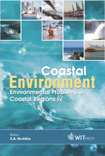Verification Of The Air Quality Models TAPM And DISPMOD In Coastal Regions
Price
Free (open access)
Transaction
Volume
58
Pages
Published
2002
Size
523 kb
Paper DOI
10.2495/CENV020401
Copyright
WIT Press
Author(s)
W L Physick, P J Hurley, A Blockley, K N Rayner & P Mountford
Abstract
DISPMOD is a Gaussian-plume based dispersion model designed to simulate the coastal fumigation of an elevated plume as it meets a growing thermal boundary layer within onshore flow. The stability profile within the onshore flow at the coast is an important input parameter for the model. TAPM is a PC-based three- dimensional prognostic model that solves the fundamental fluid dynamics and scalar transport equations to predict meteorology and pollutant concentrations, and is thus able to provide input profiles for DISPMOD. In this paper we show that stability profiles predicted by TAPM under different meteorological conditions compare well to observations at the north-west Australian coastline. Comparison of observed and modelled higher-concentration statistics at Dampier for NO, from 12-month simulations by DISPMOD and TAPM shows that both models perform quite well in a region where the coastline is complex. In addition, a DISPMOD simulation in which all meteorological input is predicted by TAPM produces concentration statistics that differ little from those of the simulation that uses observed input. TAPM predictions also agree well with ozone measurements at Dampier, where re-circulation of emissions is the primary mechanism leading to elevated ozone concentrations. 1 Introduction Modelling of the dispersion of emissions from sources in coastal locations presents challenges different to those associated with inland sources. As sea breezes move inland, they bring cooler air and a thermal internal boundary layer
Keywords





